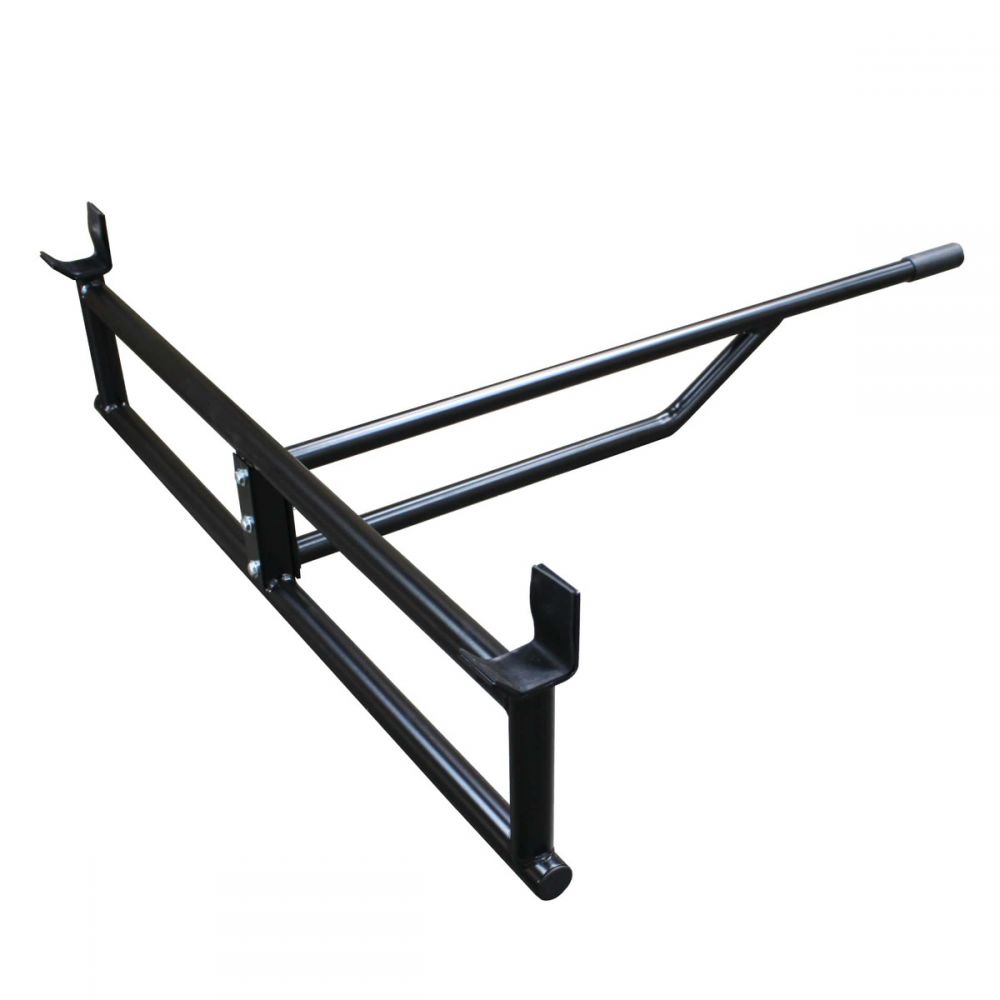
Training Partners
Training Partners - The Good, The Bad, The Ugly
The correct utilization of training partners while weightlifting. Dorian Yates (above) and his fearsome training partner Leroy Davis perform the forced-rep ballet. Yates has performed strict triceps pushdowns to positive failure. Leroy has stepped in and by lifting the entire weight stack administers two forced reps. Yates built 21-inch arms on a total of 12 sets of arms per week, triceps and biceps combined. Less can be better but less must be harder.
Find the right training partner, one that knows what they are doing, and they will enable you to break through to the next level of size, strength, power and muscle. With an expert training partner, the trainee can try things they wouldn't be unable to try alone. There are types and kinds of progressive resistance training that are impossible without the aid of skilled training partners. Good training partnesr are an invaluable asset that, used right, will cause your progress to expand exponentially.
A training partners first responsibility is to spot you and keep you safe. Training partners allows you to try those final reps at the end of a tough set, the reps that without a spotter you would be (deservedly) afraid to try. Factually, those questionable reps left untried are where the biggest gains lie hidden. The best reps are the barely made reps, those are the reps that dig the deepest possible inroad.
We teach our trainees that when the rep gets tough “lean into it,” don’t break form! Don’t try and slip, skate or skinny through the sticking point. Stay true to the technique, push or pull with the sum-total of your power, don’t twist or squirm to complete a rep. We don’t avoid sticking points, we seek them out and embrace them: embrace the suck, embrace the struggle.
Training partners give you the courage to try those reps you wouldn’t try training alone. Even on reps that fail, expert training partners can turn the failed rep into a forced rep and thereby turn set-ending failure into a growth-producing set-extending strategy that takes a muscle past its capacity. What deeper possible muscular inroad can be dug than taking a muscle past its momentary current capacity?

Perhaps the most under-referenced aspect of training with others is the psychological advantages. When someone is standing five feet away watching you, spotting you, this attention takes our game to the next level. Lifting in front of others forces us to focus and concentrate. How easy it is to space out, lose focus, lose intensity and under-perform when training alone.
Training partners help you when you are lifting and you in turn help and assist the training partner when they lift. Training partners can and should lift off and spot each other on all flat benching involving a barbell. The loaded bench press weight sits in the racks. The lifter lies on the weight bench, sets his feet and sets the grip. On the count of “three” the lifter exhales and pushes the weight off the supports.
The training partner places his hands on the barbell and assists the lifter as they push upward to clear the supports. The training partner then guides the barbell forward, from over the eyes to over the chest. The training partner stands over the lifter during the set and watches like a hawk as the lifter lowers and then pushes. If the barbell stalls, stops, or begins to head downward, the training partner steps in and pulls the bar upward and into the bench supports.
If asked or required, an experienced training partner can administer a forced rep. The ideal forced rep requires the completely focused training partner provide just enough assistance to keep the bar moving upward at a smooth and even rate. The training partner does not allow the forced rep to stall or stop; the training partner pulls upward, with not too much nor too little assistance. Most pros will limit forced reps to one or two, more than two forced reps are indicators that the poundage was too light.
Forced reps can be administered on flat or incline benches, barbell curls, any kind of cable row or pushdown, seated shoulder work, chins, pullups and hamstrings, all can use the forced rep strategy. Forced reps are not practical or advisable on squats, deadlifts, rows, standing overhead presses or any quick lift like a power clean. Progressive resistance machines lend themselves to forced reps and the bodybuilders will do rep after forced rep doing machine curls, pec dec, hack squats, machine flat benching, incline benching and machine overhead pressing.
Our approach to the forced rep is limited and practical. If when attempting one of these capacity reps the lifter stalls, the astute and alert training partner will step in and provides just enough extra added effort to finish this growth-producing rep – a rep that would not have been attempted alone. The failed rep was turned into a forced rep by the eagle-eyed training partner. The turning a failed rep into a forced rep strategy is a sensible way of taking a muscle past its current capacity in order to trigger hypertrophy.
In addition to spotting and keeping each other safe, in addition to the psychological benefit of lifting in front of other like-minded trainees, there is the aspect of adherence. You are far less likely to blow off a workout if you have someone waiting on you, someone depending on you, someone that is going to have a subpar workout because YOU don’t show up. Who’s going to spot them on the tough reps? Having training partners makes you a responsible member of a collective of like-minded individuals, all in pursuit of the same thing: a radically renovated body.
There is no magical way to conjure up a good training partner. Perhaps you see like-minded folks that show up at the same time you usually train. Perhaps they can spot you on a top set. Perhaps you could post a notice in the gym or Y. Don’t give up your principles. It is important that you train with people that subscribe to your progressive resistance philosophy. Ideally you find partners that are at your level or slightly above your level. Everyone in the group trains the same, one after the other, the training group hits the same exercises for the same number of sets and reps. what varies is the poundage; from weakest to strongest, each member goes in turn.
The group (or duo) develop a rhythm, a flow, physically and psychologically. The deeper into the workout the group goes, the greater the momentum and synergy. Everyone’s performance is lifted. Everyone performs better, light-years better, in front of others, than where they to take the same workout alone. Workouts go better with training partners.
About the Author
As an athlete Marty Gallagher is a national and world champion in Olympic lifting and powerlifting. He was a world champion team coach in 1991 and coached Black's Gym to five national team titles. He's also coached some of the strongest men on the planet including Kirk Karwoski when he completed his world record 1,003 lb. squat. Today he teaches the US Secret Service and Tier 1 Spec Ops on how to maximize their strength in minimal time. As a writer since 1978 he’s written for Powerlifting USA, Milo, Flex Magazine, Muscle & Fitness, Prime Fitness, Washington Post, Dragon Door and now IRON COMPANY. He’s also the author of multiple books including Purposeful Primitive, Strong Medicine, Ed Coan’s book “Coan, The Man, the Myth, the Method" and numerous others. Read the Marty Gallagher biography here.



